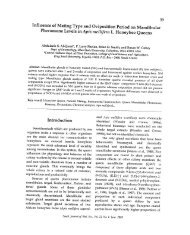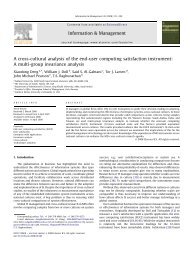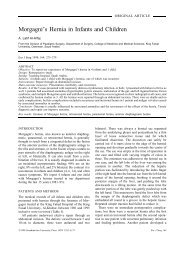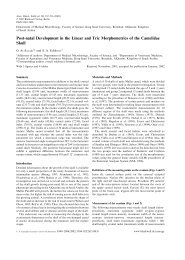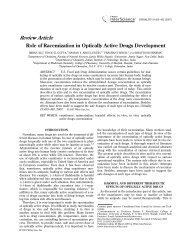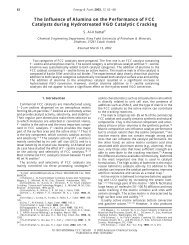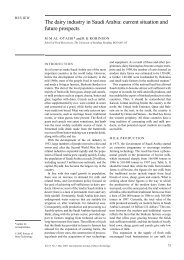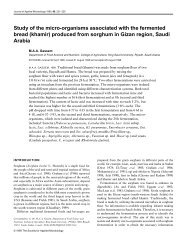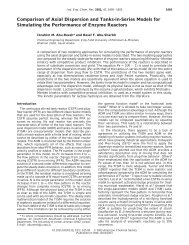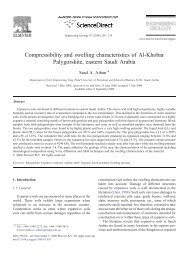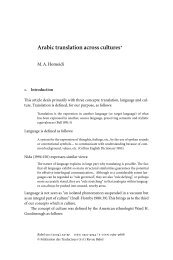Enslavement and Manumission in Saudi Arabia, 1926-38
Enslavement and Manumission in Saudi Arabia, 1926-38
Enslavement and Manumission in Saudi Arabia, 1926-38
Create successful ePaper yourself
Turn your PDF publications into a flip-book with our unique Google optimized e-Paper software.
ALAINE S. HUTSON<br />
who was enslaved, how the enslavement came about, from where slaves<br />
orig<strong>in</strong>ated, how long persons were enslaved, the k<strong>in</strong>d of work performed by<br />
slaves, <strong>and</strong> the family lives of slaves. All together the Foreign Of ce les give<br />
<strong>in</strong>formation on 262 people. 4 The les do not describe all slavery variables for<br />
each <strong>in</strong>dividual. However, for at least 84 percent of former slaves the gender,<br />
country of orig<strong>in</strong>, occupation while enslaved, age at manumission, <strong>and</strong> method<br />
of enslavement is recorded; <strong>and</strong> the number of masters <strong>and</strong> number of years<br />
enslaved is established for 54 percent.<br />
The rich <strong>in</strong>formation from these les provides answers to questions that<br />
scholars deem crucial for underst<strong>and</strong><strong>in</strong>g slavery <strong>in</strong> Muslim l<strong>and</strong>s. For example,<br />
John Hunwick has raised questions that need answers: ‘What was the ratio of<br />
men to women freed; how many were released <strong>in</strong> their prime as opposed to old<br />
age; … how many years did men or women serve <strong>in</strong> slavery; … what k<strong>in</strong>ds of<br />
occupations did slaves undertake <strong>and</strong> what skills may they have acquired that<br />
prepared them for ensur<strong>in</strong>g viability as free persons?’ 5 Details from these<br />
narratives were subjected to statistical analyses to derive answers about freed<br />
slaves from <strong>Saudi</strong> <strong>Arabia</strong>. 6 Shaun Marmon br<strong>in</strong>gs up an issue that can be<br />
<strong>in</strong>vestigated as a result of these data. That is, whether ‘slavery as constructed by<br />
Islamic law <strong>and</strong> slavery as practiced by Muslim communities seem to co<strong>in</strong>cide<br />
with remarkable symmetry’ or whether <strong>in</strong>dividual slave owners <strong>in</strong> early twentieth<br />
century <strong>Saudi</strong> <strong>Arabia</strong> ‘blatantly violated’ the pr<strong>in</strong>ciples of benevolence <strong>in</strong> the<br />
shariah. 7<br />
4 I have <strong>in</strong>dividual documents (narratives <strong>and</strong>/or questionnaires) for 59 former slaves. Data for the others are<br />
summarized <strong>in</strong> a 1934 report: F.O. 905/11, Slaves: General Question (206 are listed <strong>in</strong> the report, 6 of whom have<br />
<strong>in</strong>dividual documents); <strong>and</strong> <strong>in</strong> updated reports of manumissions from 1930 to 1935: F.O. 905/28, Slaves:<br />
<strong>Manumission</strong>: Individual Cases. 1935 (53 slaves are listed <strong>in</strong> the updates, 50 of whom have <strong>in</strong>dividual documents).<br />
5 John O. Hunwick, ‘The Same but Different: Approaches to Slavery <strong>and</strong> the African Diaspora <strong>in</strong> the L<strong>and</strong>s of<br />
Islam,’ paper presented at the Workshop on Slavery <strong>and</strong> the African Diaspora <strong>in</strong> the L<strong>and</strong>s of Islam, 30 April–2<br />
May 1999, Northwestern University, pp. 3–5.<br />
6 Information from the narratives <strong>and</strong> questionnaires for each fugitive slave was organized <strong>in</strong>to a table. Table<br />
columns were set up for each variable—<strong>in</strong>clud<strong>in</strong>g name, gender, the country of orig<strong>in</strong>, occupation, age at the time<br />
of manumission, method of enslavement, number of masters, number of years enslaved, reasons for runn<strong>in</strong>g away,<br />
etc. All the raw data columns were analyzed to determ<strong>in</strong>e the number <strong>and</strong> percentage of each category with<strong>in</strong><br />
the variable (e.g., washerwoman, bodyguard , etc. with<strong>in</strong> the occupation variable). Some of the variables, such<br />
as age, were cont<strong>in</strong>uous <strong>and</strong> numeric <strong>and</strong> did not need recod<strong>in</strong>g <strong>in</strong> order to perform further tests. Other variables<br />
such as occupation were nom<strong>in</strong>al with six or more categories. Those variables were recoded <strong>in</strong>to columns,<br />
typically, with two to four categories. Chi-square tests were then performed on nearly all comb<strong>in</strong>ations of nom<strong>in</strong>al,<br />
recoded variables. Chi-square is a nonparametric statistical test that compares actual to expected quantities of<br />
categorical data. Expected values are calculated for a given cell through the product of the marg<strong>in</strong>al probabilities<br />
of the two categories de n<strong>in</strong>g the cell. For example, if women were 25 percent of a test of gender <strong>and</strong> occupation<br />
statistically, one would expect 25 percent of each occupation to be female. If there was a signi cant percentage<br />
more or less of women <strong>in</strong> an occupation, that would suggest strongly that gender affected who entered that trade.<br />
Chi-square probabilities of .05 or less were considered signi cant. However, probabilities less than .07 were also<br />
reported.One cont<strong>in</strong>uous variable, years enslaved, was recoded as ‘20 years or less’ <strong>and</strong> ‘more than 20 years.’<br />
Years enslaved was tested both as a cont<strong>in</strong>uous variable (through a median test) <strong>and</strong> a nom<strong>in</strong>al, recoded variable<br />
(chi-square test). Pairs of nom<strong>in</strong>al <strong>and</strong> cont<strong>in</strong>uous variables were tested to determ<strong>in</strong>e mean, median, maximum,<br />
<strong>and</strong> m<strong>in</strong>imum for each nom<strong>in</strong>al category.<br />
7 Shaun Marmon, ed., Slavery <strong>in</strong> the Islamic Middle East (Pr<strong>in</strong>ceton, NJ: Markus We<strong>in</strong>er, 1999), p. vii.<br />
50



